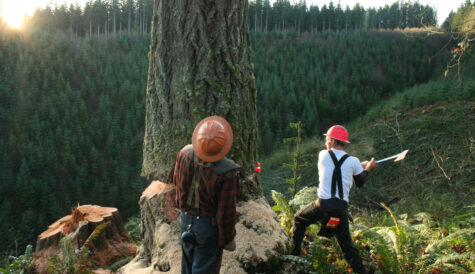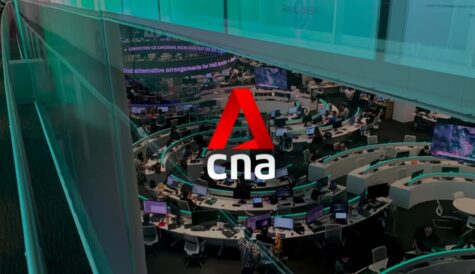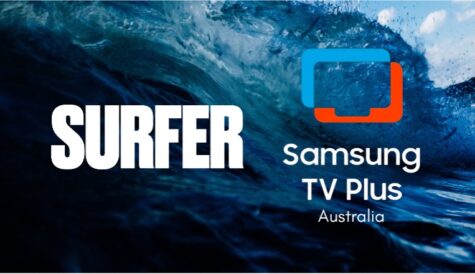
After more than 40 years of operation, DTVE is closing its doors and our website will no longer be updated daily. Thank you for all of your support.
Local heroes
Localisation – ranging from language versioning to fully-fledged localised channels – is increasingly seen as a key element of international channel providers’ strategies.
Channel providers have invested in localisation of their services to varying degrees, from the basic minimum of local-language versions in the principal markets in which they operate, through local advertising windows to fully localised channels up to and including local programming acquisitions and commissions.
As a minimum, localising into the local language is essential, according to kids channel KidsCo’s managing director Paul Robinson: “If you’re not in the local language you really don’t connect. In markets where KidsCo is fully localised and its competitors aren’t, the channel rates significantly higher because we’re perceived as the local channel.” Taking things further, KidsCo has been working to source content from local providers and using local children to film idents and “shout outs” that go out in between programmes. “Having kids on air is important. It helps to root you in the community and give a sense that you are a part of it.”
 Natural evolution
Natural evolution
For Robinson, localisation is not only an essential part of international distribution in order to secure a position in key markets. It is also seen as a way to develop additional revenue. “If you have a foothold in a market, you have viewership and you think there’s an opportunity to grow the number of viewers and revenue streams by increasing programming commitments to that market, we’ll do it. We’ve localised in most European countries,” he says.
Going beyond language-feeds to local content acquisition and production is increasingly seen as a natural evolution by many channel providers. In Spain, Turner launched entertainment channel TNT in 2007. Three years later, it has produced its own local series – Entre todas las mujeres, a six-parter written by a local writer, starring local actors and produced in Spain. It will be the first of many similar productions across Europe, says Peter Flamman, senior vice-president, entertainment, northern Europe and the UK at Turner. “We’ll do the same across Europe. It makes sense, because local productions make your channel more popular by giving the audience a sense of ownership, which brings in higher ratings,” he says. The broadcaster has years of experience in localising its brands. Gone are the days when Cartoon Network was delivered via a pan-regional feed that was merely dubbed or subtitled into local languages. “We’ve moved far away from that. Localisation should mean targeted feeds by market, distinct schedules, localised marketing and local acquisitions and productions,” says Flamman. However, a global broadcaster can also benefit from global scale – in the case of entertainment channels for example, viewers expect some US productions says Flamman. “But ask a kid in Croatia, Spain or Poland whether Ben 10 is global – they’ll tell you he belongs to them.”
Comcast International Media Group (CIMG), which also prides itself on content with proven international appeal – in this case, the diet of celebrity-driven news and features on flagship channel E! Entertainment – has nevertheless launched tailored feeds of the channel for the UK, France, Italy and the Middle East. Alongside those feeds, a pan-regional feed covers other countries from Scandinavia to South Africa. “Over the course of time, as each country within that feed gains critical mass, we will break those out,” says CIMG EMEA managing director Brad Wald. Within the local feeds, E! has commissioned local versions of hit shows such as a UK version of Live From the Red Carpet, covering the BAFTA awards, for example, and a French celebrity chatshow called Sofa.
AETN, best known as a factual channel provider thanks to History and Bio, has recently invested in character-driven programming and contemporary documentaries for its flagship channel. The company is also investing in longer-form series, which have been successful in the US. Tom Davidson, managing director of AETN UK (a joint venture between AETN and BSkyB), who is responsible for channels in the UK, the Nordic region, central and eastern Europe, Africa and the Middle East, says the company will focus on developing “fewer, bigger, better” shows, rather than a large number of one-off specials. “We are looking more towards having UK versions of longer running series with a longer running shelf life,” says Davidson.
Internationally, AETN will also invest in local programming depending on the size and maturity of the market. Co-production Vampire Island, made in Greece by Electric Sky, is one example. This follows the discovery of graves with unusual features in Myteline in Greece. History has also created short-form interstitial programming for the Polish market, where it has a dedicated feed.
“One thing about local programming is you don’t want to compromise the quality of your channel,” says Sean Cohan, senior vice-president, international at AETN. “Some channels have acquired lots of stuff that’s not necessarily of a very high quality.”
According to Cohan, localisation is nevertheless particularly important for a channel such as History in order to appeal to a particular country’s audience. “That ties in with the way we are organised, which is as a series of joint-ventures and local partnerships with local or regional people,” says Cohan.
One channel provider that forcefully emphasises the importance of localisation is Chellomedia’s Iberian operation Chello Multicanal. From scheduling and selecting content that matched the specific needs of the audience the channel provider served, Multicanal has moved to investing in more and more of its own programming for channels including documentary channel Odisea and cooking channel Canal Cocina. It has also sought to tailor joint venture channels (of which it operates a number with various local and international partners), for example insisting on renaming its AETN joint-venture for Spain as Canal Historía rather than History. The company takes a similar approach to localisation in neighbouring Portugal, where it operates film channel Dreamia (amongst others) in a joint-venture with pay-TV operator Zon Multimédia’s content arm Zon Lusomundo. “Dreamia, which was set up towards the end of last year, was an attempt to do the same in the Portuguese market, which was served from Spain. As the pay-TV market in Portugal matured there was a need to localise even further because the tastes of the Spanish and Portuguese audiences are not the same,” says Multicanal’s managing director Eduardo Zulueta. Previously, Multicanal had run two separate feeds of its own Canal Hollywood channel – one for Spain and one for Portugal. The joint-venture with Lusomundo takes that further.
The next step in Multicanal’s strategy of deepening localisation is to launch, later this year or early next year, a dedicated Portuguese feed of the Odisea channel. “Documentaries generally travel well, but if you are a local player you understand the differences,” says Zulueta. “If you match lists of the top ten most viewed documentaries in Portugal and Spain, they rarely match. There are differences in tastes and patterns of consumer behaviour.”
The extent to which other channel providers will localise depends however to a large extent on the content they carry. While a genre such as history programming requires tailoring to local interests, wildlife programming obviously has a more universal appeal. A channel provider such as Discovery, which operates across genres, will take a case-by-case approach. “Our content travels well across geographic markets, yet we do make an ongoing investment in local programming to ensure we have a close connection with our audience,” says Mark Hollinger, president of Discovery Networks International. “To support that effort, DNI has more than a hundred localised feeds internationally and we continue to launch new feeds each year in order to meet the needs of our audiences, advertisers and affiliates in each market. For example, we have launched nearly 20 new localised feeds in our EMEA region over the past two years in key growth areas including central Europe and Russia.”
BBC Worldwide, which has the advantage of access to the BBC’s vast library of content, is nevertheless also looking into doing more local acquisition in some of the territories in which it operates. “Over the next few months we will do some local productions in some markets,” says Ian McDonough, BBC Worldwide’s senior vice-president, EMEA. These are likely to be based on UK formats, but adapted to local tastes.
According to McDonough, one of BBC Worldwide’s advantages is the presence in its portfolio of Cbeebies, which provides a wide range of highly-regarded children’s programming developed with under a public rather than a commercial remit, which service providers in a number of countries value.
Localisation can take other forms. McDonough points to the example of scheduling to take local characteristics into account, based on extensive research carried out in local markets. In South Africa, for example, BBC Lifestyle carries a greater amount of food-related programmes because the audience values that, while in Poland fashion and beauty are more to the fore. “It’s a continuous work in progress,” says McDonough.
For Jean-Thierry Augustin, managing director, distribution, rights acquisition and development at pan-European sports channel Eurosport, localising is simply one aspect of getting closer to viewers – in this case, sports fans – in particular markets. “Our localisation strategy helps in this respect as it takes the channel closer to the sports fans in the different local territories. This is what we have done in the UK for example, and it has been successful, despite a difficult and highly competitive market. We have managed to sizably increase ratings and regain market share. HD was also a significant part of this, which proves that technology is an important part of the puzzle,” says Augustin. “Denmark is another amazing success story. In this market we have increased market share thanks to our quality international programming as well as the local hero effect with tennis star Caroline Wozniacki and with the strong Danish players plying their trade in the Bundesliga.”
In-house content
For publicly-funded news channel France 24, investing in content means organising newsgathering from around the globe. The channel’s approach is not to invest in permanent new bureaus but to be as flexible as possible in the way it deploys correspondents, including the use of freelance and part-time employees. “Most are exclusively working for us but we want to keep the flexibility to change and swap things around,” says Philippe Rouxel, vice-president of worldwide distribution. France24 has a total operating budget of e100m a year from the French state, and between 80-90% of its content is produced in-house, according to Rouxel. Some resources are shared between France24 and Radio France International (RFI), which together with Francophone cultural channel TV5 are now under the aegis of the AEF, the umbrella organisation set up for France’s external-facing media.
A similar emphasis on in-house content is evident at Al Jazeera. “The editorial content of any channel or network is its core and Al Jazeera is in a strong position in the international market because our content is of very high quality and our reach worldwide is huge,” says Al Jazeera Networks’ director of media development Al Anstey. Anstey says that distribution technology should not have an impact on the ways news content is gathered and edited. “Content should not be changed because of new technology,” he says. Al Jazeera correspondents in the field are already packaging and editing their own content for all the various distribution platforms. When it comes to the use of user-generated content, Anstey says Al Jazeera is open to its use but is concerned about maintaining the same level of quality control of journalism as was previously the case. He highlights the important role of Twitter in the last Iranian elections and the concomitant difficulty of discerning fact from misinformation.
For premium channels, which typically derive their appeal from carrying content that local audiences value and are willing to pay for, investing in local content is even more important. Premium channel provider HBO central Europe, the core of whose output includes a mix of well-regarded US shows such as, most recently, Boardwalk Empire, has already produced a number of local one-off shows across its region. More recently it has invested in a Romanian version of US hit In Treatment (originally based on an Israeli format). CEO Linda Jensen says the broadcaster plans to do more in this vein in the future. While the broadcaster is unlikely to develop hugely expensive series on the model of HBO in the US, it can afford to allocate significant budgets to productions in larger countries in its footprint such as Poland.
Fellow premium service provider Chello Benelux, which also focuses on a specific geographic area, has more limited scope for extensive local content acquisition. On the sports side, its Sport1 channel lost Dutch football when the Dutch league decided to start its own channel, Eredivisie Live, but Chello managing director Jeroen Bergman says that the two remain complementary (with Sport1 continuing to hold rights to significant major international competitions, focusing to some extent on tracking rights to those leagues that feature Dutch players or managers in significant numbers), with both channels helping to drive take up of premium services in a market notably resistant to pay-TV.
“Documentaries generally travel well, but if you are a local player you understand the differences.”Eduardo Zulueta, Chello Multicanal


